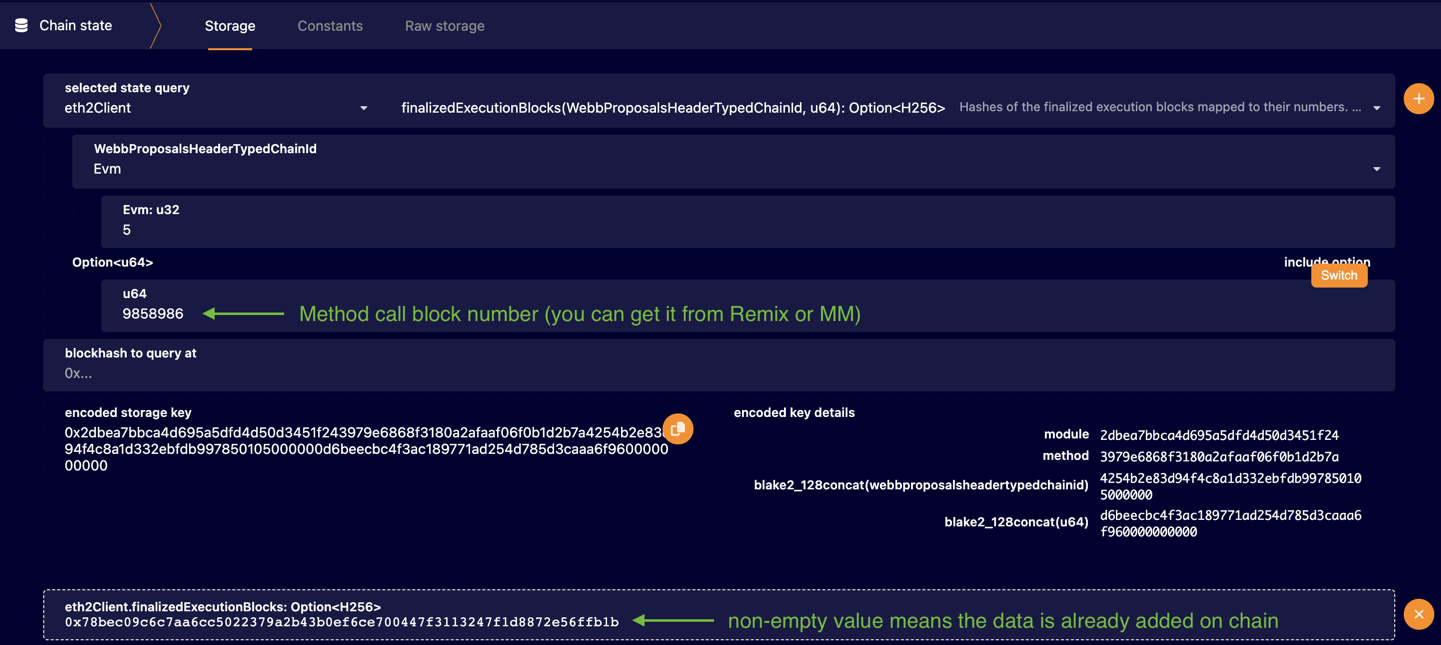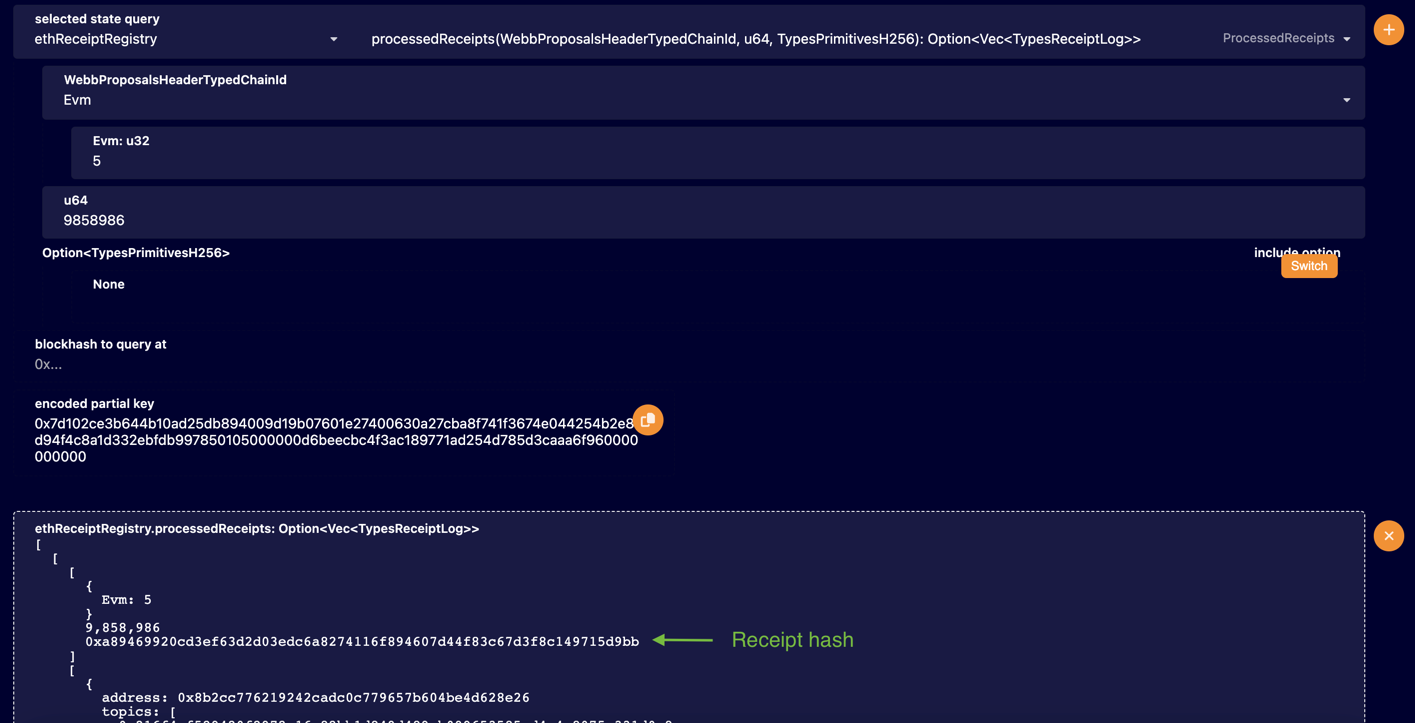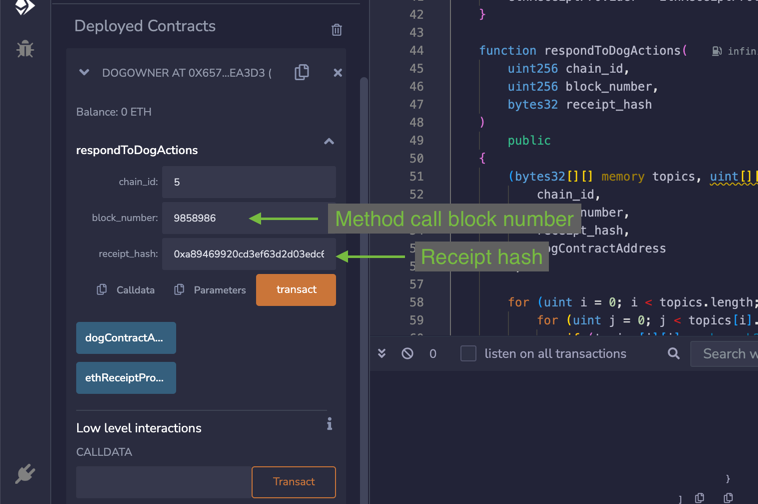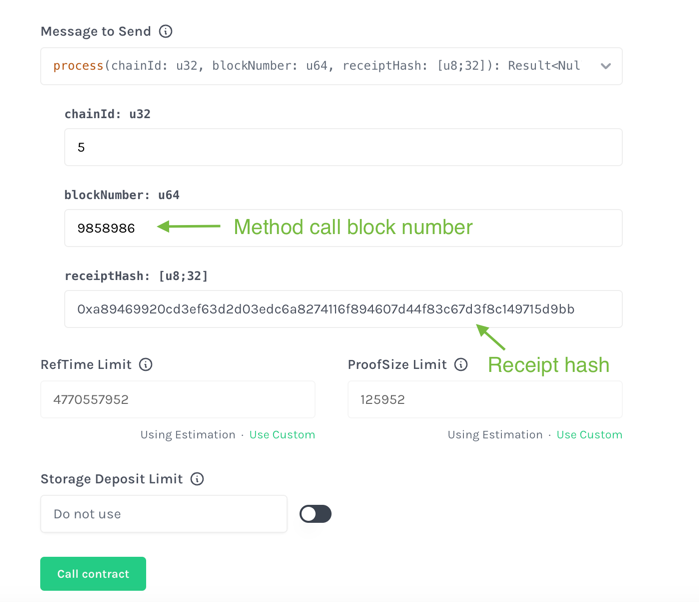ETH Light Client & Relayer setup and usage example
For now ETH Light Client is integrated only with our development blockchain Brooklyn, later Sydney and mainnet will support it too.
Before starting register on https://www.infura.io/ and get your API key.
Node setup:
git clone https://github.com/ggxchain/ggxnode.git --branch eth-light-client
cd ggxnode
Navigate to https://beaconstate-goerli.chainsafe.io/ and get the hash of Latest Finalized Block.
In file ./eth-init.toml, edit the init_block_root field with this value.
Then execute following commands in ggxnode folder to run the node:
cargo build --release -p ggxchain-node --features "brooklyn"
export ETH1_INFURA_API_KEY="https://goerli.infura.io/v3/<INFURA_API_KEY>"
./target/release/ggxchain-node --dev --light-client-relay-config-path eth-relay.toml --light-client-init-pallet-config-path eth-init.toml
Relayer setup:
git clone https://github.com/ggxchain/transaction-receipt-relayer.git --branch relayer-integration
cd transaction-receipt-relayer
In file ./helios.toml update field execution_rpc with Infura API Key
Then execute following commands in transaction-receipt-relayer folder to run the relayer:
cargo build --release -p eth-transaction-receipt-relayer
RUST_LOG=info ./target/release/eth-transaction-receipt-relayer --network goerli --database db --helios-config-path helios.toml --substrate-config-path ggxchain-config.toml
Usage example:
- Select Goerli network in MetaMask.
- Open Remix.
- Create a contract with this code:
// SPDX-License-Identifier: MIT
pragma solidity ^0.8.0;
interface EthReceiptProvider {
function logs_for_receipt(
uint256 chain_id,
uint256 block_number,
bytes32 receipt_hash,
address contract_addr
)
external
returns (
bytes32 [][] calldata,
uint[][] calldata
);
}
// Ethereum contract
contract Dog {
event Bark(string message);
event TailWag(string message);
function bark() public {
emit Bark("Woof! Woof!");
}
function wagTail() public {
emit TailWag("The dog is happy and wagging its tail!");
}
}
// GGXChain EVM contract that reacts on Dog contract
contract DogOwner {
EthReceiptProvider public ethReceiptProvider;
address public dogContractAddress;
event Response(string message);
constructor() {
dogContractAddress = 0xA90af795c551c6a62A079828c4b3360f69e18f6C;
ethReceiptProvider = EthReceiptProvider(0x0000000000000000000000000000000000009999);
}
function respondToDogActions(
uint256 chain_id,
uint256 block_number,
bytes32 receipt_hash
)
public
{
(bytes32[][] memory topics, uint[][] memory _data) = ethReceiptProvider.logs_for_receipt(
chain_id,
block_number,
receipt_hash,
dogContractAddress
);
for (uint i = 0; i < topics.length; i++) {
for (uint j = 0; j < topics[i].length; j++) {
if (topics[i][j] == keccak256("Bark(string)")) {
emit Response("Bad boy");
} else if (topics[i][j] == keccak256("TailWag(string)")) {
emit Response("Good boy");
}
}
}
}
}
4.Select Injected Provider - MetaMask in the list of environments.
5.Deploy Dog contract to Goerli network.
6.In the Block Explorer navigate to Developer -> Sudo.
7.Call the method with following parameters:

9.Wait until the block with the method call is added on GGX Chain (could take a while, 15+ mins):


EVM Contract usage:
1.Switch to Local network in MetaMask (RPC URL: http://127.0.0.1:9944)
2.Deploy DogOwner contract (in constructor update dogContractAddress field with appropriate value)
3.Call respondToDogActions method:

WASM Contract usage:
1.In transaction-receipt-relayer/chain-extension/contract build the DogOwner contract:
cargo contract build
2.Deploy the contract ./target/ink/dog_owner_contract.contract to the chain (pass the Dog address as constructor parameter) using Block Explorer or Contracts UI.
3.Call the process method:

4.Check the Explorer logs, event contracts.ContractEmitted should contain either 'Bad boy' or 'Good boy' message.